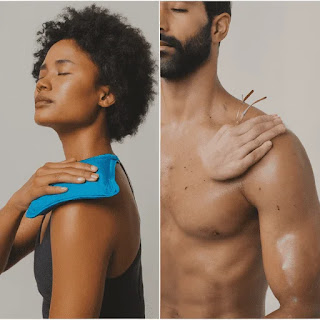Introduction:
 |
| Ankle Pain |
This article aims to explore the various causes, symptoms, and treatment options for ankle pain, providing readers with a comprehensive understanding of this discomforting condition.
Causes of Ankle Pain:
Sprains and Strains:
Ankle sprains are among the most frequent causes of pain. They occur when ligaments, which connect bones to one another, are stretched or torn. Strains, on the other hand, involve stretching or tearing muscles or tendons. Both can result from sudden twists, falls, or overexertion during physical activities.
Fractures:
Ankle fractures can occur due to trauma or severe impact, such as a fall or a sports-related injury. Fractures may affect the bones in the ankle joint, leading to considerable pain and restricted mobility.
Arthritis:
Osteoarthritis and rheumatoid arthritis can affect the ankle joint, causing pain, swelling, and stiffness. Arthritis is often a result of the natural aging process, but autoimmune conditions like rheumatoid arthritis can also contribute to joint damage.
Tendonitis:
Inflammation of the tendons surrounding the ankle can lead to tendonitis. Overuse, repetitive movements, or sudden increases in activity levels can contribute to the development of this condition.
Gout:
A gout is a form of arthritis caused by the accumulation of uric acid crystals in the joints, including the ankle. This can result in sudden, severe pain and swelling.
Symptoms of Ankle Pain:
Pain and Discomfort:
Ankle pain is often characterized by aching, throbbing, or sharp sensations around the affected area. The intensity of pain may vary depending on the underlying cause.
Swelling:
Inflammation is a common response to injury or conditions like arthritis. Swelling in the ankle may be visible, making it challenging to wear shoes or walk comfortably.
Limited Range of Motion:
Ankle pain can restrict movement, making it difficult to walk, stand, or engage in regular activities. This limitation is especially noticeable when attempting to bear weight on the affected ankle.
Redness and Warmth:
Inflammation can lead to increased blood flow, resulting in redness and warmth around the ankle joint. These symptoms are often indicative of an underlying issue.
Treatment Options:
Rest and Ice:
For acute injuries, resting the affected ankle and applying ice can help reduce swelling and alleviate pain.
Compression and Elevation:
Wrapping the ankle with a compression bandage and keeping it elevated can aid in minimizing swelling.
Pain Medications:
Over-the-counter pain relievers, such as ibuprofen or acetaminophen, may be recommended to manage pain and inflammation.
Physical Therapy:
Physical therapy exercises can improve strength, flexibility, and stability, helping to prevent future injuries and promote healing.
Bracing or Splinting:
In some cases, wearing a brace or splint may provide additional support to the ankle, aiding in the recovery process.
Medical Interventions:
Severe cases may require medical interventions, such as casting for fractures or surgical procedures to repair damaged ligaments, tendons, or joints.
Conclusion:
Ankle pain can significantly impact an individual's quality of life, but understanding the underlying causes, recognizing symptoms, and seeking appropriate treatment can contribute to effective management and recovery.
If you experience persistent or severe ankle pain, it is crucial to consult with a healthcare professional for a proper diagnosis and tailored treatment plan. Early intervention and comprehensive care can help alleviate pain, restore function, and prevent future issues with the ankle joint.



.webp)

